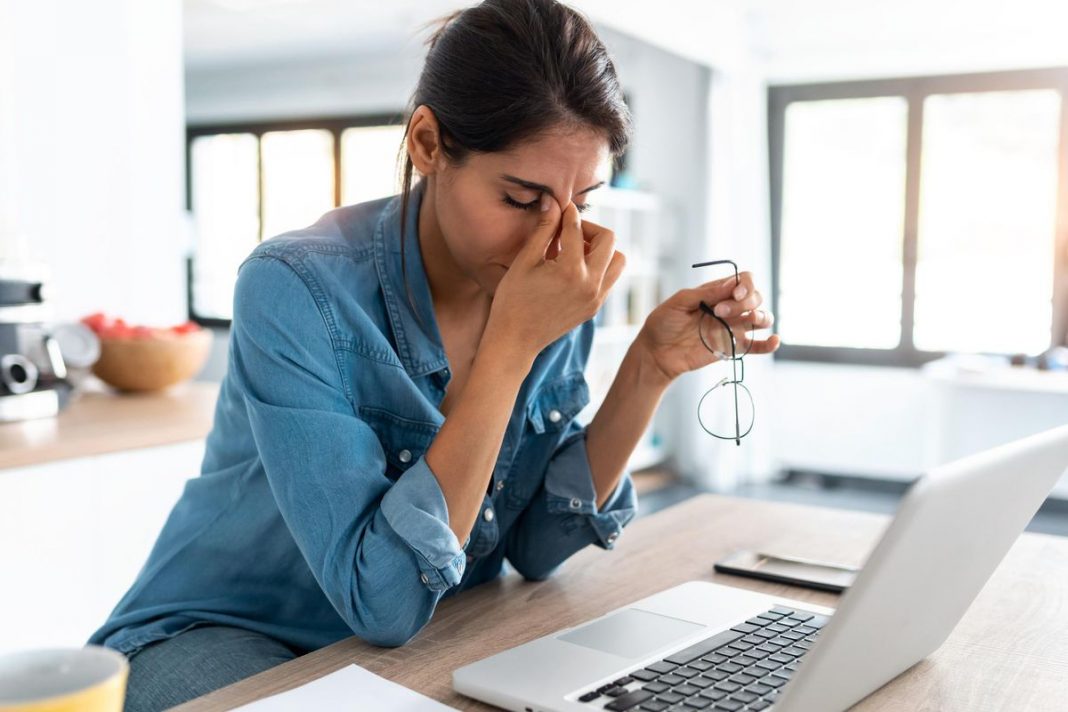
New study suggests Zoom fatigue impacts women more than men.
getty
Since the pandemic started, employees and students alike are complaining of Zoom fatigue, that exhausted feeling after a day of online meetings or classes. However, a new study has found that Zoom fatigue may not impact everyone in the same way, and women may suffer more than men from video conferencing.
The researchers studied over 10,000 people and found that one in seven women reported feeling “very” to “extremely” fatigued after Zoom meetings. Only one in 20 men felt the same way after their video calls. In fact, women experienced more fatigue than men after video calls, even after controlling for differences in usage, demographics and personality. Now researchers are honing in on why women have a stronger reaction to these online meetings.
The researchers found that the gender difference in feelings of exhaustion was rooted in men’s and women’s different responses to looking at themselves on the screen. In the default mode on many video-conferencing platforms including Zoom, participants view themselves as well as the other attendees. This makes online meetings quite different from in-person meetings, where participants can’t see themselves during the meeting.
Looking at one’s own face leads women, more than men, to think more about how they appear. Researchers have studied this phenomenon for decades and often refer to it as “self-focused attention.” Prior to Zoom, the most common method of studying the effects of self-focused attention has been to expose participants to a small mirror.
For example, in one study, researchers placed a small mirror in the room with study participants and found that the presence of the mirror impacted women and men differently. Women were more likely than men to be more self-aware and to think about themselves when the mirror was present. The researchers concluded that the greater self-focused attention that women experienced with the mirror was associated with negative emotions and feelings including depression. An analysis of 79 studies on this topic found that the effects were generally stronger for women than men.
The researchers of the current study believe video conferencing has the same effect as the mirror. That is, for women, the digital image of themselves creates a heightened awareness of how they come across in the meeting. As evidence, women, more than men, reported concern and distraction when asked about their reaction to seeing themselves on a Zoom call. The study authors report that men’s and women’s different reactions to seeing themselves accounted for the gender differences they found in Zoom fatigue.
Gender wasn’t the only factor the researchers found that was associated with Zoom fatigue. Introverts reported higher levels of exhaustion than extroverts following video conferencing, younger individuals had more exhaustion than older individuals, and people of color reported a slightly higher level of fatigue than white participants. The study authors suggest more research is needed to explain these differences. (Although the present research has not yet been peer-reviewed, it has been posted on Social Science Research Network and is a follow-up to a previous publication in Technology, Mind And Behavior).
The good news is there’s a simple solution to eliminate the Zoom fatigue associated with seeing your own image—turning off the self-view button. Zoom allows you to hide your image without turning off your camera. In other words, others can still see you, but you don’t have to stare at yourself. If you’re in gallery mode, simply hover over your image and click on the ellipses (three dots) that appear in the upper corner, and then choose “Hide Self View.”




